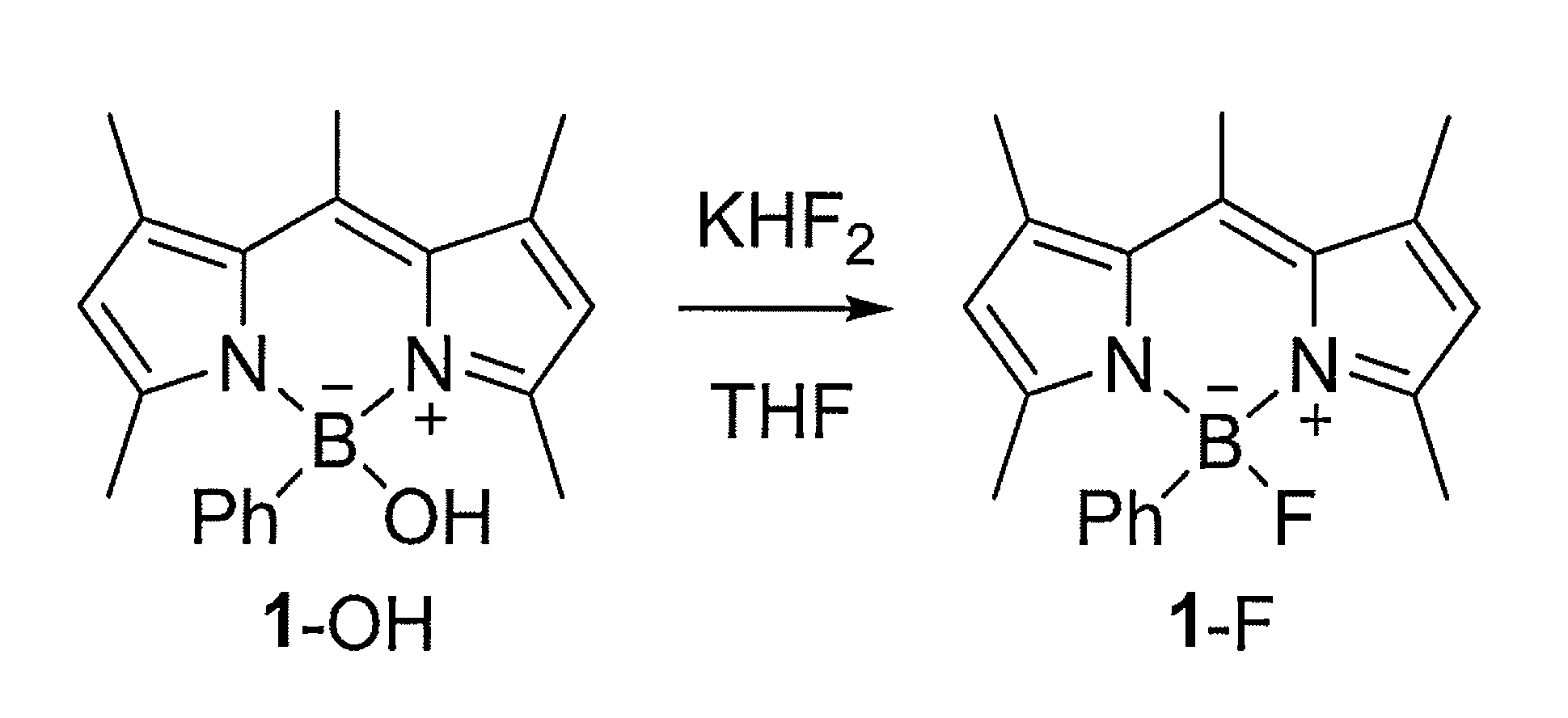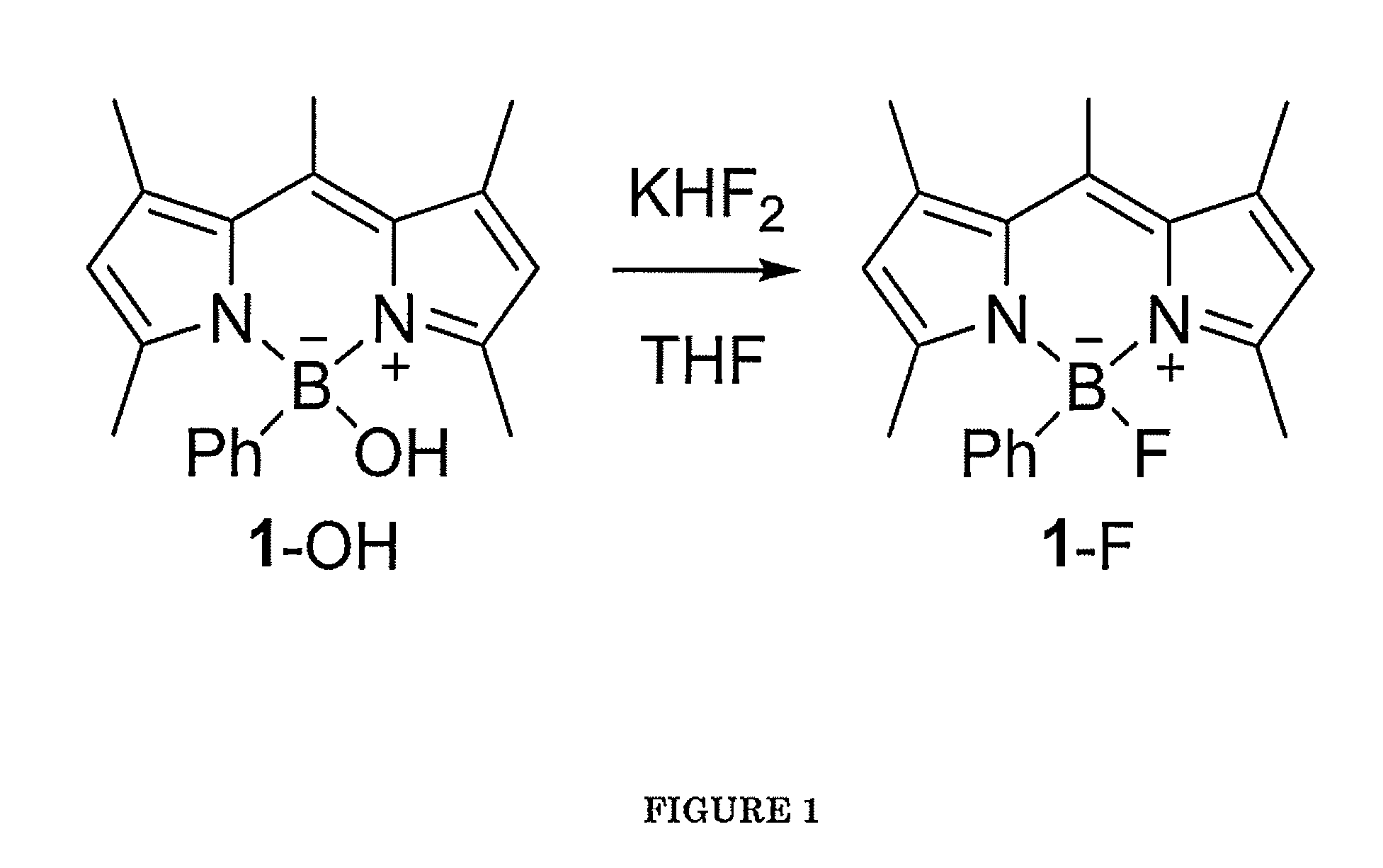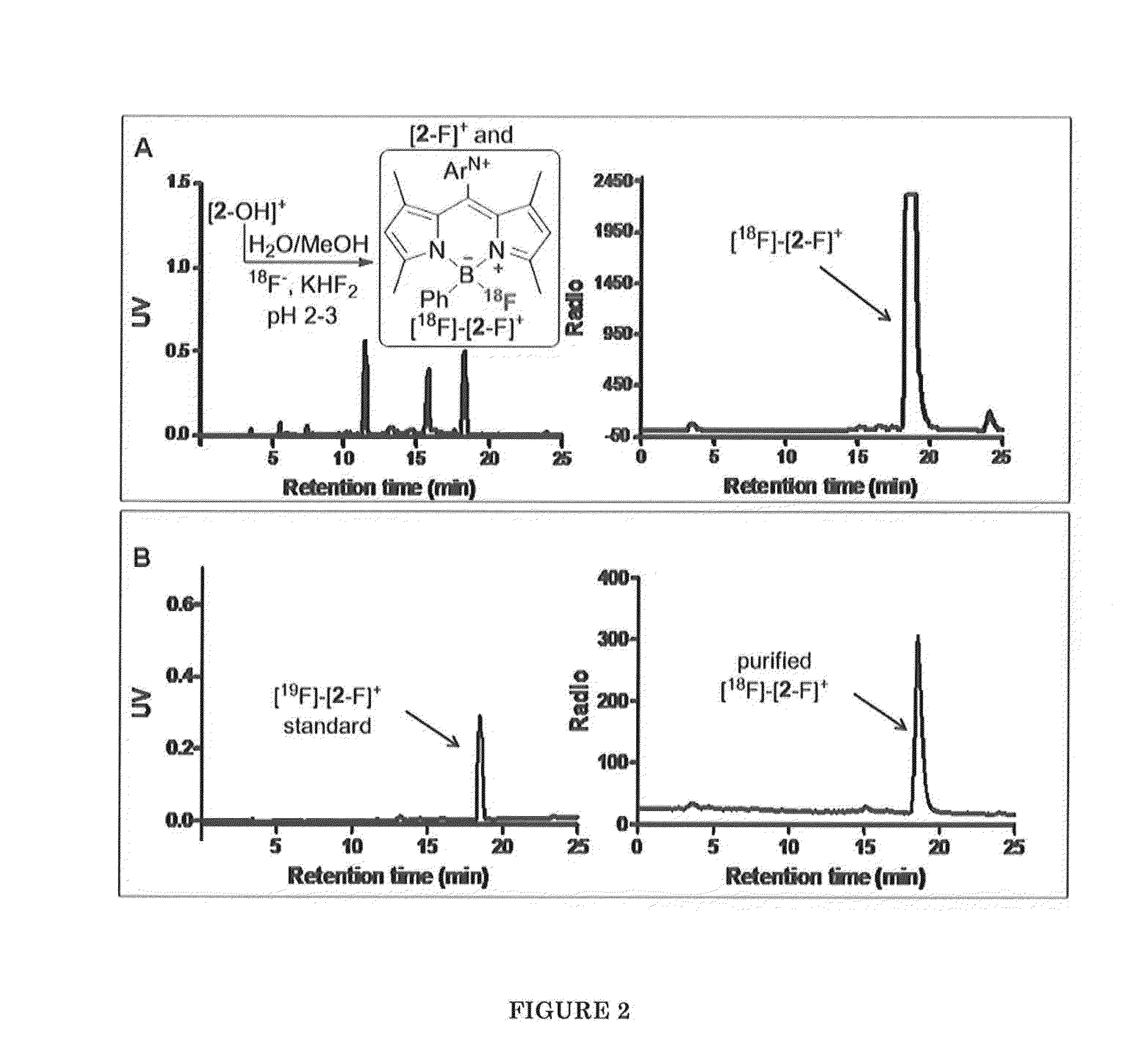Boron-Based Dual Imaging Probes, Compositions and Methods for Rapid Aqueous F-18 Labeling, and Imaging Methods Using Same
- Summary
- Abstract
- Description
- Claims
- Application Information
AI Technical Summary
Benefits of technology
Problems solved by technology
Method used
Image
Examples
example 1
Synthetic Methods and Materials
[0115]General Considerations.
[0116]4-dimethylaminobenzaldehyde, p-chloranil, and phenylboron dichloride were purchased from Aldrich. 2,4-dimethylpyrrole was purchased from TCI. All preparations were carried out under an atmosphere of dry N2 employing either a glove box or standard Schlenk techniques. Solvents were dried by passing through an alumina column (CH2Cl2) or refluxing under N2 over Na / K (Et3N). NMR spectra were recorded on a Varian Unity Inova 400 NMR and an Inova 500 NMR spectrometer at ambient temperature. Chemical shifts are given in ppm, and are referenced to residual 1H and 13C solvent signals and external neat BF3-Et2O for 11B and 19F. Electrospray mass spectra were acquired on a MDS Sciex API QStar Pulsar. The spray voltage was 4.5 kV. All spectra were obtained in positive mode from CH3CN. HPLC analyses were carried out on a analytical reversed-phase high performance liquid chromatography (HPLC) system equipped with a dual UV absorbanc...
example 2
NMR study of [2-OH]+ vs KHF2
[0121]FIG. 5(a) shows the 19F NMR spectrum of [2-OH]+ in acidic D2O / MeOD (v / v=1 / 1) solution. Upon the addition of KHF2, a signal appeared at −173 ppm within 2 min (FIG. 5(b), indicating the formation of [2-F]+.
example 3
UV-vis and Fluorescence Measurements of [2-OH]+ and [2-F]+
[0122]UV-vis spectra were recorded on an Ocean Optics USB4000 spectrometer with an Ocean Optics ISS light source. Steady state emission spectra were collected at room temperature using a PTI QuantaMaster 4 fluorescence spectrophotometer equipped with a Model 810 PMT detector. The spectra of [2-OH]+ and [2-F]+ were measured in CH2Cl2 (FIG. 6). Quantum yields were measured using fluorescein as a standard in 0.1 M NaOH solution. Quantum yields obtained for [2-OH]+ and [2-F]+ are 12.1% and 14.3%, respectively.
PUM
| Property | Measurement | Unit |
|---|---|---|
| Capacitance | aaaaa | aaaaa |
| Capacitance | aaaaa | aaaaa |
| Fluorescence | aaaaa | aaaaa |
Abstract
Description
Claims
Application Information
 Login to View More
Login to View More - R&D
- Intellectual Property
- Life Sciences
- Materials
- Tech Scout
- Unparalleled Data Quality
- Higher Quality Content
- 60% Fewer Hallucinations
Browse by: Latest US Patents, China's latest patents, Technical Efficacy Thesaurus, Application Domain, Technology Topic, Popular Technical Reports.
© 2025 PatSnap. All rights reserved.Legal|Privacy policy|Modern Slavery Act Transparency Statement|Sitemap|About US| Contact US: help@patsnap.com



